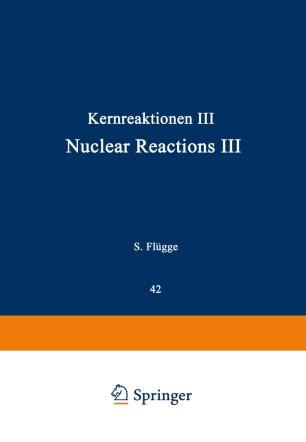Angular Correlations

The study of the angular distribution and correlation of nuclear radiations is applied to two broad classes of phenomena. The first of these, to which the term “angular correlation” is normally applied, concerns the decay, by the emission of successive radiationsl, of radioactive nuclei, and of nuclei which have been produced in unstable excited states. These radiations may be detected at particular directions with respect to the decaying nuclei and the relative probability of detection of the cascade is then a function, inter alia, of these directions. In addition to this directional correlation, which refers to directions of emission only, other angle variables may be involved, e.g. if the efficiency of the detectors of radiation depends also on the state of polarisation of the radiations, and in such cases the appropriate correlation functions are more complex functions of several angles. Furthermore, if the original system of decaying nuclei is not isotropic, in a statistical sense, or if the cascade of radiation occurs in the presence of some anisotropic disturbance, such as an extra-nuclear electromagnetic field, then the correlation function will involve angles relating the directions of emission and of polarisation to those characterising the original or external anisotropies, as well as angles characteristic of the relative directions of emission and polarisation themselves.
In practice, the correlation is made between the electron and the nuclear recoil. The transformation between the correlations of the two types has been examined in detail by KOFOED-HANSEN. Electron recoil nucleus correlations in the allowed β-decay He6—>Li6, involving only a Gamow-Teller interaction, have been measure by RUSTAD and RUBY. Experimentally conditions here are also favorable to precise measurements, since the large energy of the β-transition and the light nucleus result in large recoil energies. A schematic diagram of the apparatus is shown in Fig. 40). For two different electron energy ranges the values of A obtained were 0.36 +/- 0.11 and 0.31 +/- 0.14, as compared with the theoretical value of +1/3 for T and -1/3 for A, showing that the Gamow-Teller interaction is predominantly T.
Similar experiments by MAXON, ALLEN and JENTSCHKE using the Ne19—>F19 β-transition, for which both Fermi and Gamow-Teller interactions are possible, indicate that the Fermi contribution is predominantly scalar.